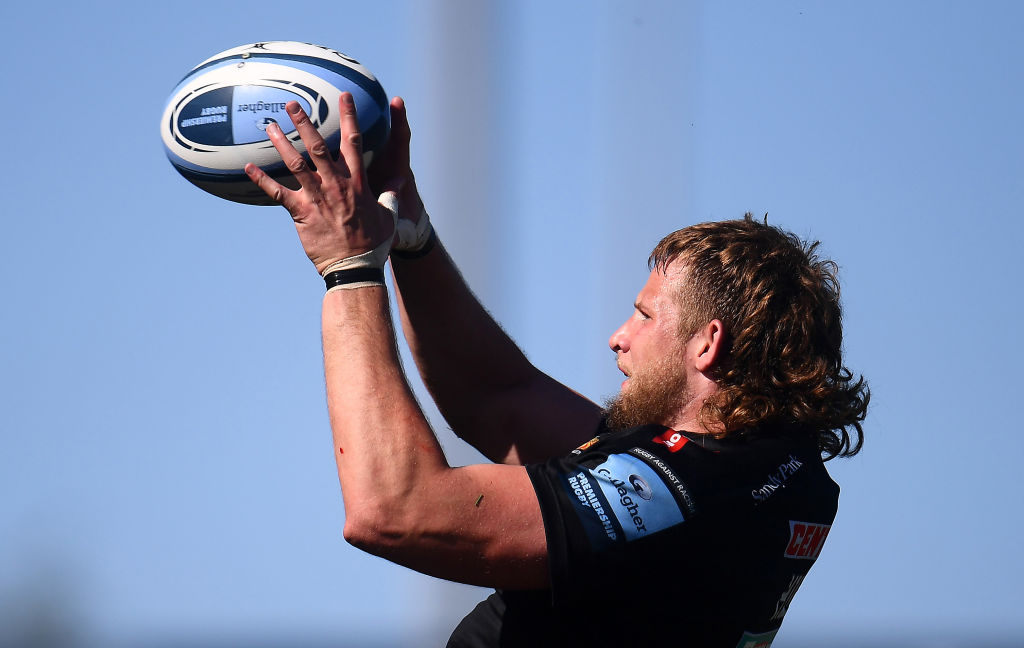Premiership Rugby: Cap changes hint at continued silly signing season

Not often will you find a top quality rugby player moving from one club to another mid-season, even less frequently will you find them doing it at any point for anywhere near the value of a football transfer.
That said, every few years there’s a seemingly silly season of signings where some of the best players switch to bitter rivals, flock to a team rebuilding or shoot off to a better side.
This year we have already seen one of England’s in form fly-halves, George Ford, announce his departure from Leicester Tigers for Sale Sharks, while his club captain Ellis Genge is off to Bristol.
Also heading to the West Country is Sale and United States No10 AJ MacGinty, while the Sharks have signed Exeter and British and Irish Lions forward Jonny Hill.
Exeter are also losing Sam Skinner – off to Edinburgh – while World Cup winner Handre Pollard is replacing Ford at Leicester. Keeping up?
But why does this happen every couple of years, and what on earth can clubs do about it?
Many of Europe’s top flight clubs are subject to salary caps, a system that limits what they can spend on their playing departments while also putting a value on the production of young and international talent in the form of credits.
Doff the cap
The cap has been steadily reduced in recent years within England’s Premiership. Last season the cap stood at £6.4m and this year it has been reduced to £5m.
Next year the cap will remain at £5m. At first that doesn’t seem so bad, but it’s elsewhere in the wage rules where the squeeze will be felt.
Saracens broke the cap on three occasions, 2016-17, 2017-19 and 2018-19, through various means – at a time when the cap was higher than the current £5m mark.
Up to and including this season, clubs are allowed two players, so called marquees, whose wages are exempt from the salary cap.
Clubs must declare their marquee players internally to ensure cap auditors know of their existence.
For this year, you could have a full squad worth £5m plus (including the rewarding credits for academy and international players) as well as two players on comparatively monumental wage bills exempt from the cap.
Bristol’s Charles Piutau, for instance, is said to be Premiership Rugby’s first £1m player. On that salary he’s almost certain to have been designated a marquee.
Next season, though, the number of marquee players allowed will be cut from two to one. For many clubs, that could mean having to save many hundreds of thousands in wages to cover the cost. Hence the silly season of transfers.
Not all of the moves listed above are driven by the cap. Sure, Leicester would have wanted their captain Genge to stay but it is understood that he took a pay cut to move to Bristol. Some things are more important than simply the bank balance.
This does, however, point to why young players like Zach Mercer are leaving England for France and while there’s such an exodus of rugby’s talent towards the lucrative Top League in Japan.
The Baxter plan
Rugby is a passion for many but it too is a profession, and not one many can do for a lifetime. But the cap is strangling financially expectant squads while clubs continue to make losses – so surely this is a good thing?
“The majority of them [players] still coming in are still salaries that you would expect to be paying if it was a £6.4m market,” Exeter Chiefs’ director of rugby Rob Baxter said last month.
“There doesn’t really seem to be, at this stage, that kind of realisation that it’s a big drop-off.
“At the moment that does make the Premiership way less competitive when it comes to southern hemisphere signings, as an example.
“Some of the base salary levels in New Zealand and Australia now are actually comparable to what we could probably offer, whereas before in the £6.4m cap you could be very competitive on base level contracts.”
Teams can receive up to £600,000 in credits for fielding players from their academies, but in reality this does little to help clubs when they’re looking for that big money signing. Clubs need to be savvy in their recruitment.
Championship rugby the answer
In a related issue, just over 49 per cent of players who played in last week’s round of top-flight matches had previously played in the Championship, according to second-tier club Bedford Blues.
The Championship is widely seen as underfunded and an afterthought for England’s governing body the Rugby Football Union (RFU). But here is an example of how talent nurtured in the UK can become the lifeblood of Premiership teams.
Would it be nice to have a league full of the world’s best players, like much of top flight European football? Sure. But rugby is in no position to play financial chess right now, and the reduction in the cap has already seen the transfer game of the sport unfold.
Clubs are being forced to find their own solutions to adhere to the new cap with reduced marquees. One of those could be further exploiting the talent in the Championship by keeping it alive.